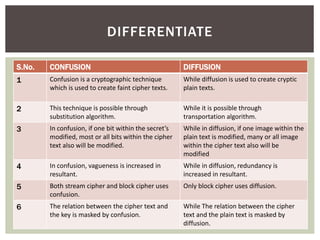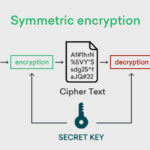The world of cryptography often resembles an intricate tapestry woven with threads of mystery, intellect, and human ingenuity. Among the myriad of terms that entangle aficionados and neophytes alike are “cipher” and “code.” While they may appear interchangeable on the surface, a deeper examination reveals distinct characteristics that differentiate these two pivotal elements of cryptographic practice. In the realm of Christian thought, this differentiation carries profound implications, weaving a narrative that echoes the theological themes of understanding and revelation.
Imagine a cipher as a labyrinthine garden, where each pathway leads to its own unique destination. A cipher transforms individual letters or numbers into other symbols, creating a new form of expression. This manipulation fosters secrecy; it invites the curious to decipher the encoded message, much like a believer delving into the scriptures to uncover divine truths hidden in parables and allegories. For instance, the Caesar cipher—named after Julius Caesar, who employed it for military communications—simply shifts each letter by a fixed number of places in the alphabet. Such simplicity belies the cleverness of requiring the decodification of the message, akin to how believers must ponder and meditate on sacred texts to grasp their full meaning.
In contrast, consider a code as a secretive conversation between friends, where entire phrases are exchanged with specific meanings beyond their ordinary definitions. A code typically involves a predetermined list or dictionary that assigns particular meanings to groups of words or phrases. Christian congregations, particularly in their early formation, often utilized coded language to protect their communications from outside scrutiny, allowing them to convey ideas and instructions surreptitiously. For instance, the term “fish” might not merely refer to a sea creature but symbolize Christ himself. This transformation encourages a unique bonding among members, reinforcing a collective identity that transcends superficial connections.
At the heart of Christian doctrine lies an imperative for clarity amidst confusion, a theme that resonates closely with the distinctions between ciphers and codes. Christ, often referred to as the “Light of the World,” provides illumination to those wrestling with the shadows of ignorance—echoing the way ciphers invite individuals to engage in the laborious yet rewarding pursuit of understanding. To facilitate this comprehension, early Christians frequently employed cryptographic techniques to shield their beliefs from pervasive Roman scrutiny. These acts of linguistic subterfuge served not only the practical need for secrecy but also framed a spiritual metaphor: believers transforming the ordinary into the extraordinary.
Furthermore, both ciphers and codes reflect the duality of the human experience: the desire for clarity and the embrace of enigma. The New Testament is replete with instances where Christ speaks in parables, crafting narratives that veiled profound truths while simultaneously inviting interpretation. This mirrors the operational mechanics of both ciphers and codes, revealing layers of significance that flatter the mind while igniting the spirit’s quest for understanding. Just as Christ’s cryptic messages beckon reflection, ciphers engage the decoder’s intellect in a form of divine interplay—each solved puzzle a testament to the revelatory power of faith.
Moreover, the fascination with this disciplinary distinction traverses beyond theological applications and extends into the realms of culture, literature, and art. The code of a culture can be likened to the evolving lexicon of an ideology, a shared understanding that fosters community and connection. Literary figures, such as Dante Alighieri or John Milton, have masked profound truths within intricate allegorical frameworks, challenging their readers to decode the deeper significations layered within their verses. Such creative endeavors parallel the theological exploration of faith, wherein believers decipher the enigmas of existence, moral behavior, and ultimate destiny.
As the line distinguishing ciphers from codes continues to blur, it is imperative to recognize their respective significance. The cipher, like the hidden promises of divine covenant, offers concealed meanings complemented by the beauty of revelation. Codes, conversely, flourish in their communal aspect—channeling collective understanding through shared lexicon. This not only fortifies the connection among believers but also serves as a means to articulate the inexpressible mysteries of faith.
In a contemporary context, we witness a digital age where cryptography transcends the archaic and ventures into the modern realm of cybersecurity. However, the age-old conflation of ciphers and codes persists, reinforcing their distinctiveness within the Christian narrative. Innovators and scholars alike continue to seek ways to safeguard information while fostering clarity, much like the search for theological coherence amid the tumultuous tides of modernity. The application of cryptographic principles in this pursuit often echoes the exhortations of scriptural wisdom, urging discernment and vigilance in a world inundated with conflicting messages.
Ultimately, the journey through the landscape of ciphers and codes unveils profound insights not only into the mechanics of communication but also into the essence of faith. Just as each cipher brings a moment of clarity through perseverance, and each code fosters community through shared experience, the intricate tapestry of Christian thought continues to weave these essential elements into its core. The choice between cipher and code becomes, then, a matter not merely of terminology but of a deeper metaphorical exploration of secrecy, revelation, and the quest for understanding—the timeless dialogue between humanity and the divine.








Leave a Comment